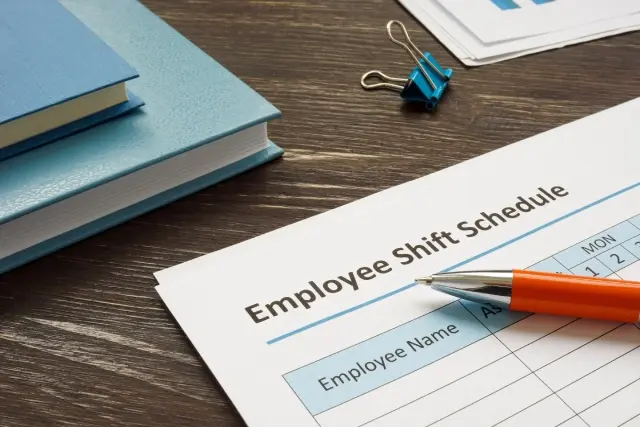How well your hourly workers understand their finances might not seem like it's your responsibility, but their level of confidence has a real impact on your bottom line.
Financial literacy—the ability and knowledge to make informed financial decisions—is important for employees to feel empowered with their finances. For quick-service restaurant (QSR) employees, it’s arguably even more important. A study by the Global Financial Literacy Excellence Center shows financial literacy is particularly low among Gen Z individuals, who also make up most of the QSR workforce.
As a QSR leader, your team’s financial literacy matters. Not only will it help make your HR and payroll processes more efficient, but it will also help create a positive work environment and improve retention.
In this article, we’ll dig deeper into the positive impact that financial literacy can have on hourly workers and on your business and explain what you can do to improve it.
Financial literacy for employees: decoding pay stubs
The first step for hourly workers to better manage their money is to learn how to read pay stubs. Even for employees who work Monday through Friday from 9 to 5, that first pay stub can be a doozy. For hourly workers, however, it tends to be more complicated, as they have to navigate through varied pay structures (hourly wages, overtime rates, and shift differentials), schedules that change from week to week, resulting in fluctuating paychecks, and compliance with specific labor laws and regulations governing minimum wage, overtime pay, and break periods.
Teaching hourly workers how to crack the code of pay stubs will help their financial literacy in three ways:
- It makes money become real. If all employees know is that they worked X amount of hours and earned Y amount of money without having any clue of what happened between those two points, then money becomes an abstract thing, a little more than a number on a piece of paper. When they learn what goes on behind the scenes of a pay stub—labor laws, taxes, calculations, and so on—money becomes much more real. This change in perspective helps when it’s time to actually manage their money.
- It helps them plan ahead. Once hourly workers understand how wages are calculated, they will be able to know how much they’ll earn based on their worked hours. That, in turn, will help them plan their budgeting and spending.
- It prevents underpayments. Payroll software has been around for decades. Yet, errors, such as misclassifying employees or incorrectly withholding employee taxes, happen all the time. As a result of those errors, employees may get paid less than they should be, which will obviously hurt their finances. Knowing how to read a pay stub will help them prevent that.
How financially savvy employees help payroll processing
Teaching employees how their wages are calculated will benefit your HR team, too:
- It ensures accuracy. When payroll errors go undetected, your best allies are employees who can identify discrepancies, increasing your accuracy in payroll processing.
- It improves compliance. Errors in paychecks have consequences. They may put you in breach of labor and wage laws and even lead to fines and costly legal disputes. With knowledgeable employees who know how to take care of their money, you have more chances of fixing those errors sooner rather than later.
- It saves HR time. Educated employees require less assistance and clarifications from HR or payroll administrators, freeing up valuable time and resources and reducing the likelihood of payroll-related inquiries and disputes.
What you can do as an employer to improve financial literacy
Actively train and provide resources
Offer comprehensive training sessions or workshops that cover various aspects of financial literacy. Reading pay stubs is an important part, but you can also train them on:
- Payroll processes: how payroll works, how to identify common payroll errors and discrepancies, such as missing hours, incorrect wage rates, or unauthorized deductions.
- Tax and labor laws: what standard deductions are and how they vary from person to person, tax withholding, minimum wage, etc. Need help? Our employee W-4 guide is a great resource to hand out.
- Personal budgeting: budgeting, saving, debt management, and retirement planning. Consider partnering with tools like YNAB, a popular budgeting application that offers Financial Wellness packages for employers.
To accommodate different learning styles, make sure the training is easily accessible and available in multiple formats—workshops, seminars, written materials, online resources, or video tutorials that employees can reference at any time.
Encourage workers to review pay stubs and ask questions
Create an open and supportive environment where employees feel comfortable asking questions about their pay. Encourage managers and payroll staff to address inquiries promptly and thoroughly, ensuring that employees receive accurate information and clarification when needed.
Use technology
Leverage payroll software and digital tools to streamline payroll processes and provide employees with easy access to their pay information. Consider implementing self-service portals where employees can view their pay stubs, track hours worked, and update personal information.
Seek feedback and adapt
Regularly solicit feedback from employees about their payroll experiences and areas where they may need additional support or clarification. Use this feedback to identify opportunities for improvement and tailor educational efforts to address specific needs or concerns.
The link between financial literacy and the bottom line
Investing time and resources to improve the financial literacy of your employees has a direct correlation with your bottom line in two ways:
Improved retention. Transparent communication about payroll builds trust between employers and employees. When workers feel confident they are being paid accurately and fairly, morale and job satisfaction increase, fostering a positive work environment and improving retention.
Better productivity. Financial literacy leads to improved financial stability and reduced stress about money. And a less stressed and preoccupied workforce is a more productive and focused one.
Conclusion
Although you can’t be responsible for how your employees manage their money, there are things you can do to help them do it better. By investing in their financial literacy, you’re showing you want them to succeed not only at work but also in their financial life. That will have a positive impact on them as individuals but also on your business in terms of better payroll accuracy, a positive work environment, improved retention, and higher productivity.





